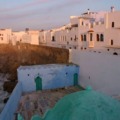Mount Athos, located on the easternmost peninsula of Halkidiki in northern Greece, is one of the world’s most important centers of Eastern Orthodox monasticism. Often called the “Holy Mountain,” this sacred region has been home to continuous monastic life for over a thousand years and is dotted with majestic monasteries clinging to cliffs and forests overlooking the Aegean Sea. Protected as both a UNESCO World Heritage Site and an autonomous spiritual state within Greece, Mount Athos is a place where time seems to stand still, steeped in Byzantine tradition, ancient architecture, and deep religious devotion. Visitors enter a world of chanting monks, centuries-old manuscripts, remote hermitages, and serene natural landscapes — making Mount Athos not only a pilgrimage destination, but also a rare glimpse into a living spiritual heritage preserved across the ages.
Stavronikita Monastery
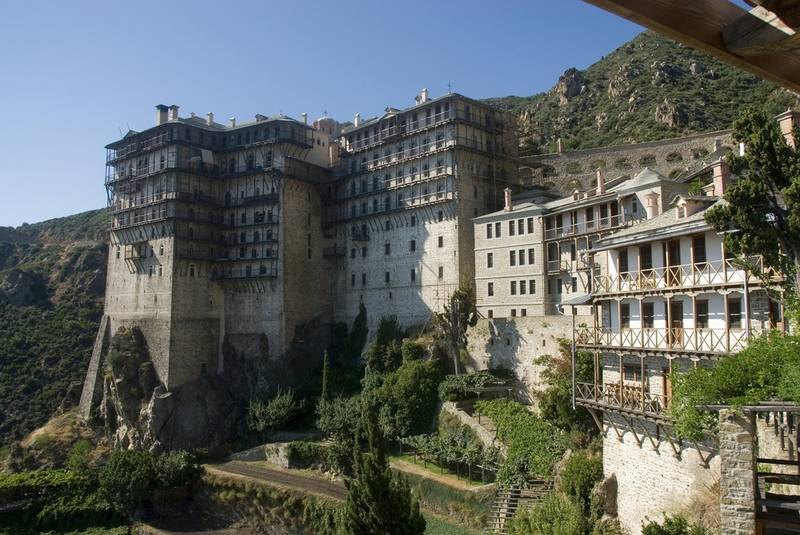
vlas2000/shutterstock
Stavronikita Monastery, perched on a rugged cliff along the eastern coastline of Mount Athos, is one of the peninsula’s smaller but deeply revered monasteries. Founded in the 11th century, it is dedicated to the Holy Cross and is known for its austere beauty, traditional Byzantine architecture, and remarkable frescoes that adorn its interior. The monastery is surrounded by dense forests, offering a sense of seclusion and tranquility that has long attracted monks seeking a contemplative life. Despite its modest size, Stavronikita plays an important role in the spiritual life of Mount Athos, maintaining centuries-old liturgical traditions and a reputation for disciplined monastic practice. Visitors are struck by the monastery’s serene atmosphere, panoramic sea views, and the harmonious integration of its stone buildings with the dramatic natural landscape.
Iveron Monastery
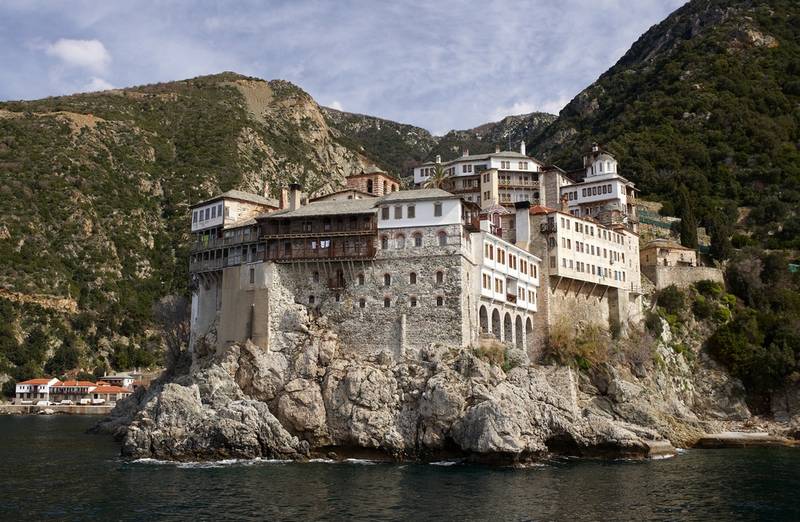
vlas2000/shutterstock
Iveron Monastery, one of Mount Athos’s most famous and historically significant monasteries, was founded in the 10th century by Georgian monks and is dedicated to the Virgin Mary. Renowned for housing the miraculous icon of the Panagia Portaitissa, also known as the “Iviron Icon,” the monastery has been a major pilgrimage site for centuries and played a central role in preserving Orthodox traditions during periods of hardship. Its imposing stone walls, fortified towers, and Byzantine-style churches are set against a backdrop of lush forested slopes descending toward the Aegean Sea, creating a strikingly picturesque setting. Visitors can reach Iveron Monastery via the main coastal footpath from the nearby town of Dafni, or by boat from the Athos peninsula’s harbors, which provide access to many of the monasteries along the coastline, making it one of the more accessible spiritual sites on Mount Athos.
Simonopetra Monastery
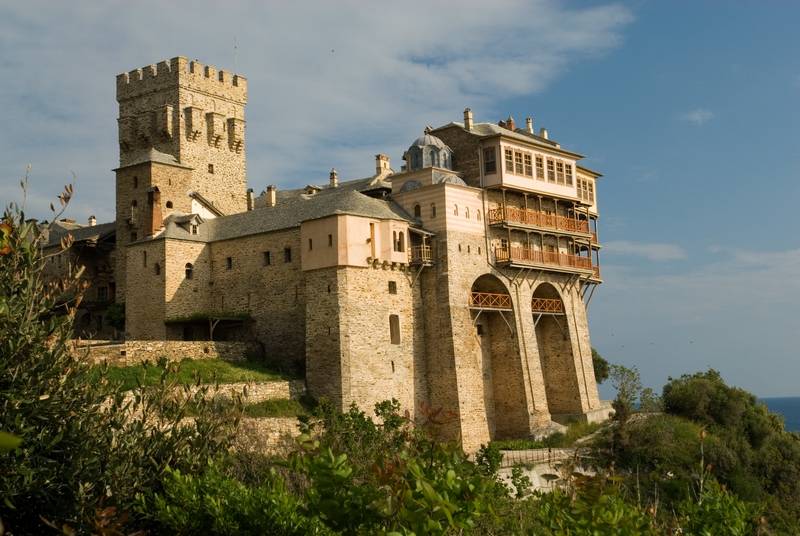
vlas2000/shutterstock
Simonopetra Monastery, dramatically perched on a sheer cliff 330 meters above the Aegean Sea, is one of Mount Athos’s most visually striking and architecturally impressive monasteries. Founded in the 13th century by Saint Simon the Myrrhbearer, the monastery is dedicated to the Transfiguration of Christ and is renowned for its precarious yet awe-inspiring location, seemingly suspended between rock and sky. Its multi-level stone structures, red-tiled roofs, and winding stairways exemplify traditional Athonite architecture, while the interior houses exquisite icons, frescoes, and religious relics that attract both pilgrims and visitors. Accessible by a steep footpath from the main coastal road or via boats that stop nearby, Simonopetra offers not only a deep spiritual experience but also breathtaking panoramic views of the surrounding forested mountains and sparkling sea below.
Gregoriou Monastery
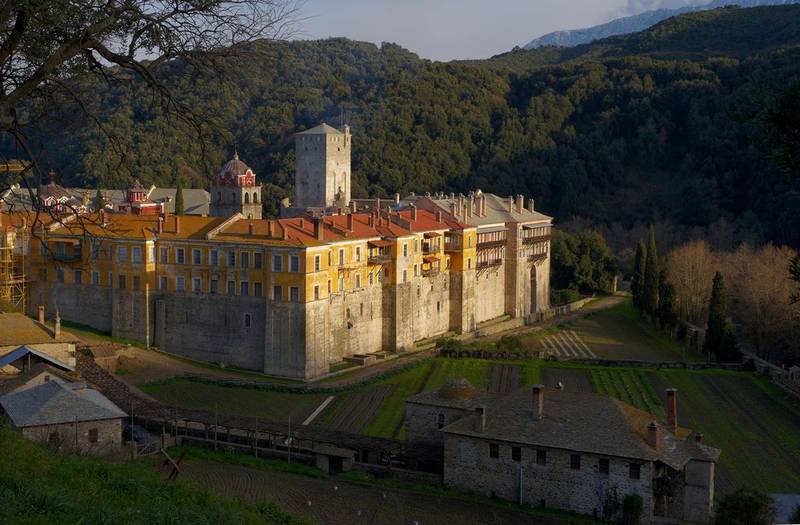
vlas2000/shutterstock
Gregoriou Monastery, founded in the 14th century by Saint Gregory, is perched on a forested slope overlooking the Aegean Sea and is celebrated for its serene atmosphere and impressive collection of icons and religious manuscripts. Dedicated to the Virgin Mary, the monastery has maintained a strong tradition of liturgical life and monastic scholarship, attracting monks and pilgrims alike who seek spiritual contemplation. Its buildings, built in traditional Byzantine style with stone walls and red-tiled roofs, blend harmoniously with the surrounding pine forests and rugged terrain. Accessible by a winding footpath from the nearby port of Dafni or via boat along the Athos coastline, Gregoriou offers visitors both a glimpse into the rich spiritual heritage of Mount Athos


